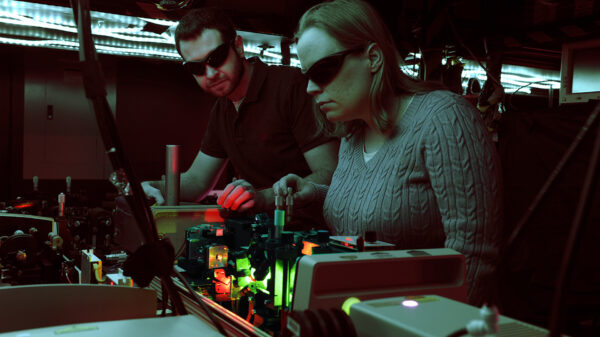An international team of researchers, spearheaded by Yufeng Zhang from Aalto University’s Photonics Group, has announced a significant breakthrough in enhancing the performance and energy efficiency of artificial intelligence (AI). Their innovative approach to tensor operations leverages light, enabling computations to occur “at the speed of light itself.” This advancement has the potential to reshape how AI tasks are executed.
“Our method performs the same kinds of operations that today’s GPUs [Graphics Processing Units] handle, like convolutions and attention layers, but does them all at the speed of light,” Zhang states. This transformative research focuses on utilizing the physical properties of light, rather than relying solely on electronic circuits, to perform multiple computations simultaneously.
Traditionally, AI systems have depended on highly-parallel computation, often using processors developed for rendering 3D graphics. Even specialized neural processing units (NPUs) designed for neural networks still resemble traditional graphics chips, which imposes limitations on their performance and efficiency. The research team aims to overcome these constraints by shifting from electronic to photonic systems.
Innovative Optical Approach
While the concept of photonic computing is not new, Zhang and his colleagues have discovered a novel method to encode data into the amplitude and phase of light waves. This allows light waves to interact and combine effectively, enabling direct matrix and tensor multiplications—crucial operations in AI algorithms.
See also Tempus AI Reports $334M Earnings Surge, Unveils Lymphoma Research Partnership
Tempus AI Reports $334M Earnings Surge, Unveils Lymphoma Research PartnershipTo illustrate the efficiency of their method, Zhang provides an analogy: “Imagine you’re a customs officer who must inspect every parcel through multiple machines with different functions and then sort them into the right bins. Normally, you’d process each parcel one by one. Our optical computing method merges all parcels and all machines together—we create multiple ‘optical hooks’ that connect each input to its correct output. With just one operation, one pass of light, all inspections and sorting happen instantly and in parallel.”
Energy Efficiency and Future Applications
The research claims to offer significant energy efficiency advantages over GPU-based systems from leading companies such as NVIDIA and AMD. “This approach can be implemented on almost any optical platform,” adds Zhipei Sun, co-leader of the Photonics Group at Aalto University. The team envisions integrating this computational framework directly onto photonic chips, which would enable light-based processors to tackle complex AI tasks with remarkably low power consumption.
Published in the journal Nature Photonics, the study indicates that the technology could potentially be deployed on existing or specifically designed hardware within the next three to five years. This timeline suggests a promising future for AI applications, where processing speed and energy efficiency can be significantly enhanced through photonic innovations.
The implications of this research extend beyond immediate performance improvements. As AI systems become more intricate and data-intensive, the demand for efficient processing capabilities is expected to escalate. By exploring light-based computations, researchers like Zhang and Sun are paving the way for an exciting evolution in AI technology that could redefine capabilities across various industries.
In conclusion, the shift from electronic to photonic computing could not only improve performance metrics but also address the pressing energy demands of modern AI applications. As the field advances, continued exploration of this innovative method will be crucial for realizing its full potential and integrating it into practical applications.








































































